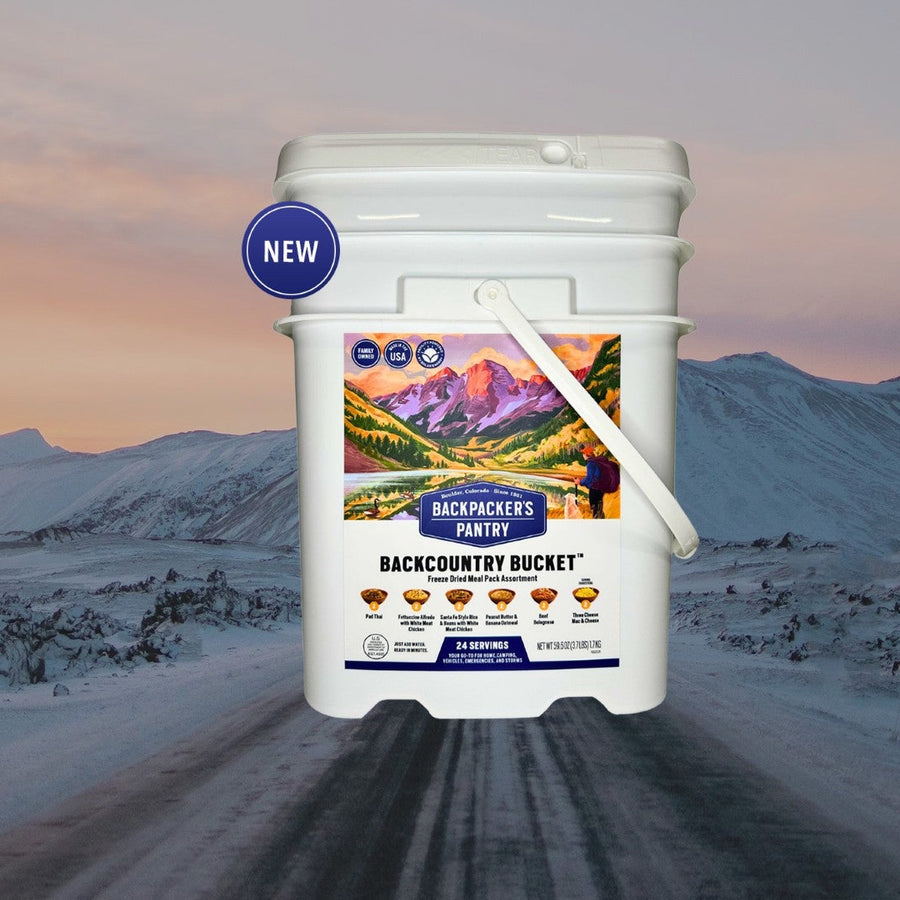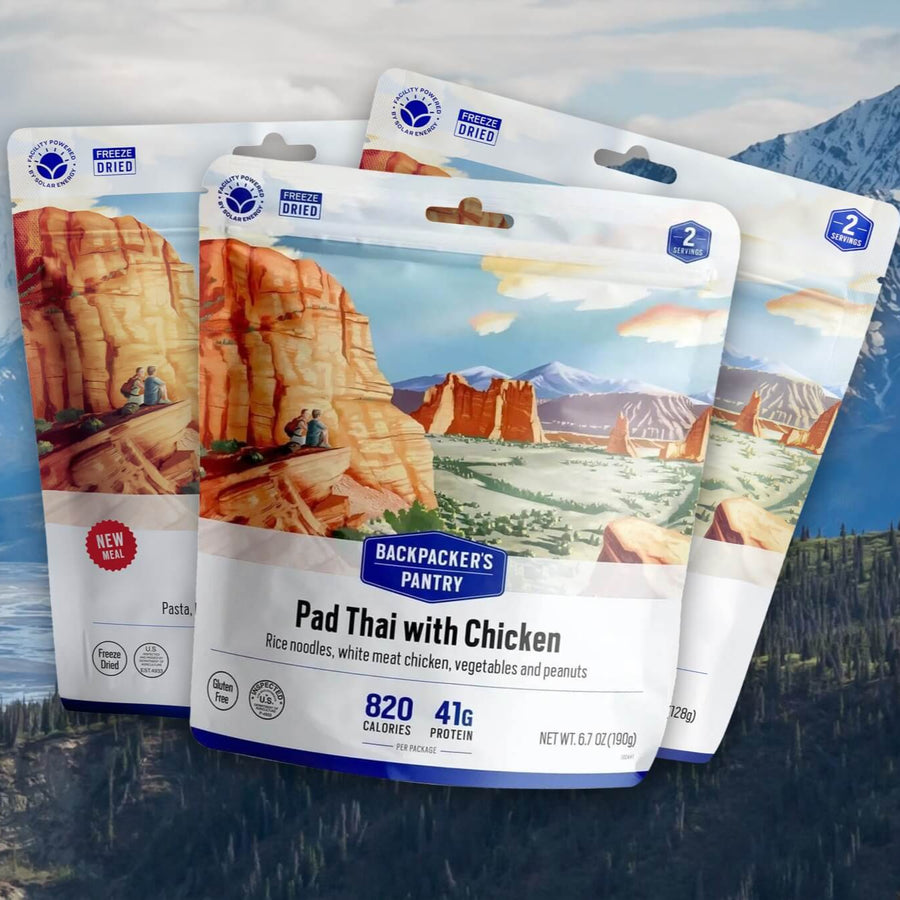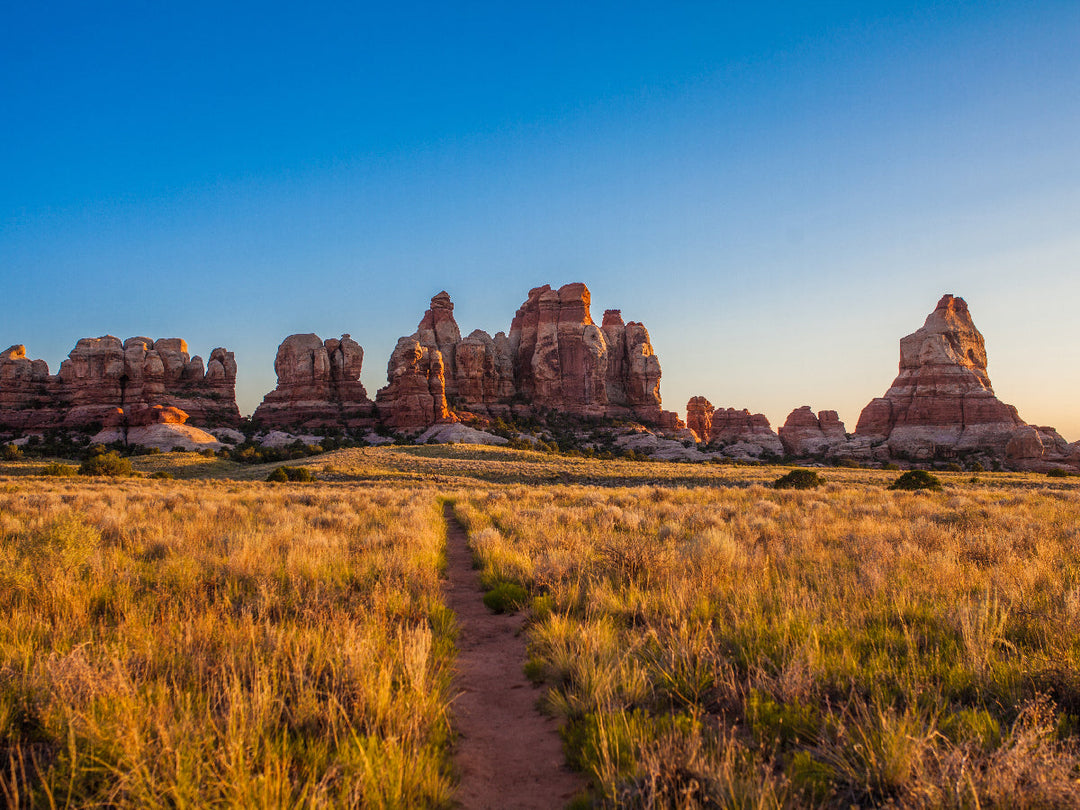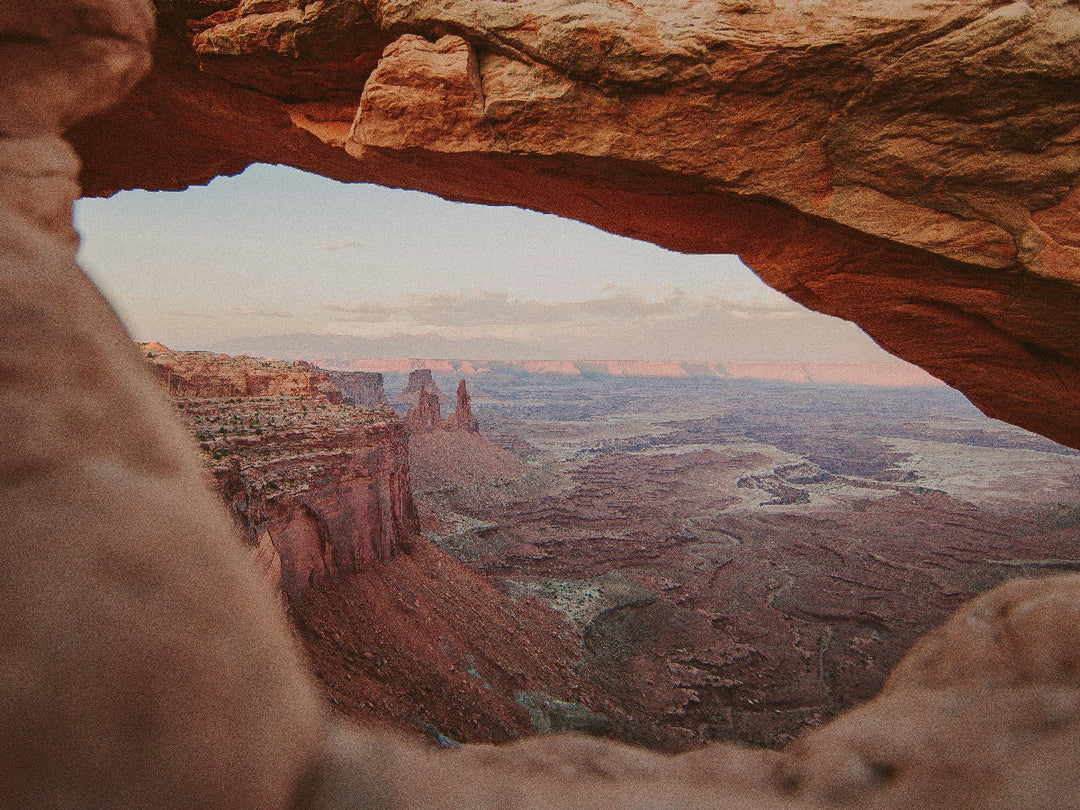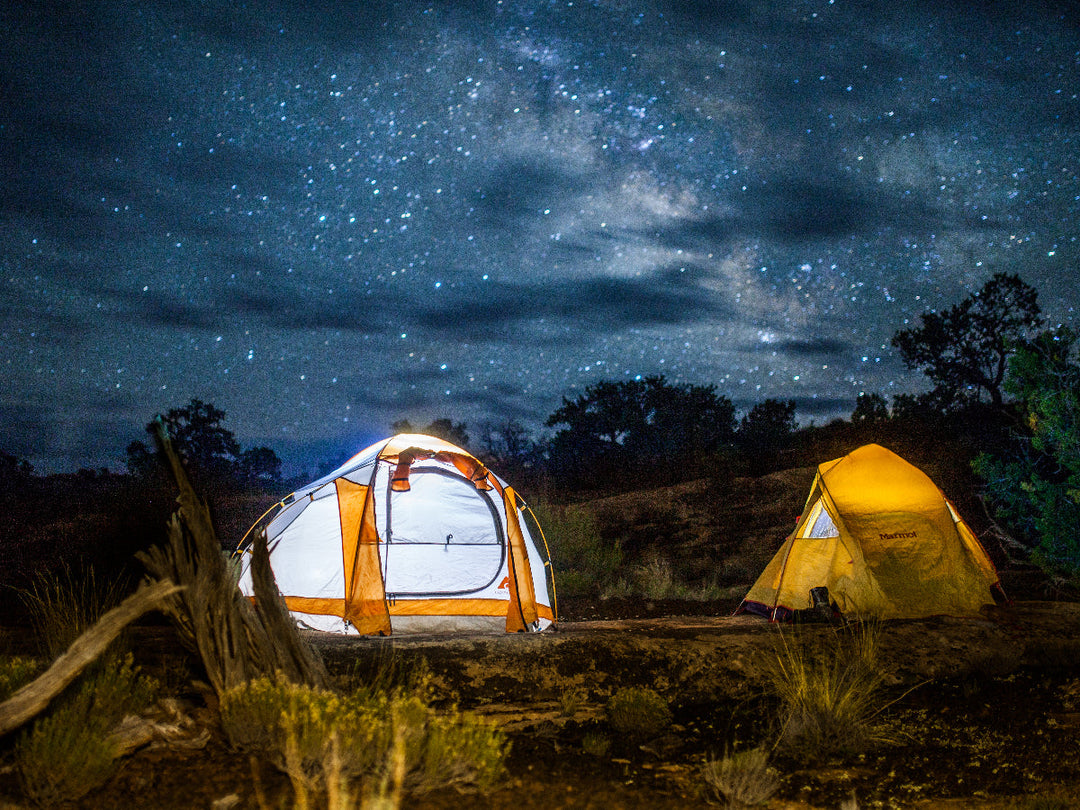The Best Hikes in Rocky Mountain National Park - From Easy to Expert

There’s a reason that Rocky Mountain National Park, or RMNP, is one of the most photographed and talked about parks in the US. Nestled in the mountains of Colorado, it’s absolutely stunning, with crystal-clear lakes, majestic elk, and towering snowy peaks. And, with 350 miles of hiking trails, it’s one of the best National Parks for hikers. That’s why any good hiking guide will point you toward RMNP. Sure, you can experience some of the beauty of the park from your car, but Rocky Mountain National Park is best experienced on foot.
Hikes are available in a wide range of difficulty and commitment levels. Rocky Mountain National Park has everything from short jaunts where you’re never too far from civilization to longer, more challenging, and exposed hikes. And between those two ends of the spectrum are miles and miles of interesting, beautiful trails that aren’t going to scare or bore you, but instead are designed to give you the fullest experience of the park’s natural beauty as possible.
So stop daydreaming about hikes in the Rockies, and start planning. Gear up for the trail, and use this guide to put together a hiking itinerary that’s perfect for you.
Best RMNP Hikes By Distance and Difficulty
Best Easy Hikes in Rocky Mountain National Park

Bear Lake Loop
Description: The Bear Lake Loop is the perfect intro to hiking in Rocky Mountain National Park. It’s got great 360° views as you circle the lake, and check out the surrounding peaks. It’s a great warmup, and perfect for beginner hikers and families. Mileage/Elevation (Round trip): .7 mi / 20’
Difficulty (out of 10): 1
Trailhead: Bear Lake Parking Area (Directions)
Permits: Special reservation required
Season: Year-round
Alberta Falls Trail
Description: The Alberta Falls Trail is a gentle climb up to a beautiful waterfall view. It’s a wide, well-traveled trail that traverses multiple forest ecosystems and pays off big time with the waterfall view. This hike should be accessible for most folks, and doesn’t require a high level of fitness.
Mileage/Elevation (Round trip): 1.6 mi / 160’
Difficulty (out of 10): 2
Trailhead: Glacier Gorge (Directions)
Permits & Reservations: Specific reservation required
Season: Year-round
Tundra Communities Trail
Description: While Tundra Communities is a relatively short, paved trail, it’s located above 12k’ feet above sea level. It’s one of the easiest ways to access the incredible high-alpine tundra. This ecosystem is unique, and very fragile, so be sure not to leave the trail, and come prepared for a high-elevation experience.
Mileage/Elevation (Round trip): 1.1 mi / 175’
Difficulty (out of 10): 2
Trailhead: Rock Cut (Directions)
Season: Summer
Best Moderate Hikes in Rocky Mountain National Park
Cascade Falls
Description: The North Inlet trail is a mellow trail on the Grand Lake side of the park that leads to the impressive Cascade Falls. This 100’ waterfall tumbles and bounces down granite steps, making for an amazing show. The trail is relatively easy, but not short, so make sure you’re prepared. Look out for marmots and brook trout along your way!
Mileage/Elevation (Round trip): 6.8 mi / 300’
Difficulty (out of 10): 4
Trailhead: North Inlet (Directions)
Season: Spring-Fall
Mills Lake
Description: Mills Lake is a gem of the park. It’s a beautiful, high-elevation crystal-clear lake that reflects the mountains towering above it. It delivers the classic RMNP hiking experience: huge views, great trails, and incredible rock formations. Mills Lake should be high on your list of destinations in the park.
Mileage/Elevation (Round trip): 5 mi / 700’
Difficulty (out of 10): 4
Trailhead: Glacier Gorge (Directions)
Permits & Reservations: Specific reservation required
Season: Spring-Fall
Deer Mountain Trail
Description: If you’re looking for views, Deer Mountain has them in spades. It’s a relatively easy mountain to summit, and from the top you have incredible views of the park, complete with towering granite and dense woodlands. This hike is a step up from the other moderate options due to the elevation gained, but still quite accessible. Mileage/Elevation (Round trip): 6.2 mi / 1,410’
Difficulty (out of 10): 5
Trailhead: Deer Mountain (Directions)
Season: Spring-Fall
Best Expert or Challenging Hikes in Rocky Mountain National Park
Hallett Peak
Description: If you’re looking for an incredible alpine adventure, Hallett Peak is a great hike. It’s got great views, incredible rocky trails, and the Tyndall Glacier. It’s a step up in difficulty, but it’s also a huge step up in terms of immersion in nature.
Mileage/Elevation (Round trip): 10.3 mi / 3,240’
Difficulty (out of 10): 7
Trailhead: Bear Lake (Directions)
Permits & Reservations: Specific reservation required
Season: Spring-Fall

The Keyhole
Description: Longs Peak is the highest point in the park, and the Keyhole is an incredible viewpoint just before the ascent becomes a technical climb. This hike has it all, from wooded forests to imposing boulder hopping and scrambling. It’s not for the faint of heart, but the views and experience pay off.
Mileage/Elevation (Round trip): 12.4 mi / 3,825’
Difficulty (out of 10): 8
Trailhead: Longs Peak (Directions)
Season: Spring-Fall
Bluebird Lake
Description: Bluebird Lake is a feature-packed hike that’s also a great choice for trailrunners. Along your way you’ll pass multiple waterfalls, and wildflower-filled meadows. This hike has a lot of optional spurs, so you can cut your day short and head back, or extend your time in the mountains depending on how you’re feeling. Mileage/Elevation (Round trip): 12.6 mi / 2,490’
Difficulty (out of 10): 7
Trailhead: Wild Basin (Directions)
Season: Spring-Fall
What to Know Before You Go
As the name implies, Rocky Mountain National Park is a mountainous, rugged park that's subject to extreme weather, wildlife, and other hazards. They’re all part of the appeal, and a little bit of preparation goes a long way. Rocky Mountain National Park is at its best from June through August. Those are the months when most of the trails have melted out from under the snow, the wildlife is active, and the wildflowers are at their peak. Of course, you can visit RMNP outside of that window, but there’s a good chance that higher-elevation trails will be snow-covered and inaccessible. It’s a good idea to keep an eye on conditions via the Park’s webcams.
It’s also important to remember that weather conditions change quickly at high altitudes, and afternoon thunderstorms are common and dangerous. Start early, so that you’re off the summit and headed back down by noon, so that you don’t risk being struck by lighting. And respect the wildlife. Don’t approach or feed wild animals, and keep a healthy distance from deer, elk, and bears. Bear spray is not essential, but it’s never a bad idea to carry. Finally, you can keep up to date with any news in the park via their alert system. And, while National Parks usually charge an entrance fee, there are several ways to get in and experience them for free.
What to Bring
It’s important to be self-sufficient anytime you’re traveling in the backcountry. That starts with your clothing. Make sure you’ve got comfortable, supportive shoes, and a full set of layers, including insulation and a rain jacket. It gets cold fast at high elevation. In your pack, make sure you’ve got plenty of food and water, as well as a means of purifying more water. Pack sunscreen, a blister kit, and a knife or multitool. Finally, it’s a good idea to carry a satellite communicator on more remote hikes. Hopefully you’ll never need it, but if you do, you’ll really appreciate carrying it.
Finally, depending on the hike, and the time of year, you might need to bring tools to deal with snow and ice. For higher-elevation objectives carry microspikes, and a light ice axe. And make sure to set up those microspikes for your shoes, and familiarize yourself with them before it really counts!
Planning Resources
Beyond paying your park entry fee, there aren’t any other special fees for specific hikes in Rocky Mountain National Park. Due to high demand, traffic, and crowding, RMNP operates on a timed-entry reservation system during peak hours over the summer season. Reservations are typically released one month at a time, at the beginning of the month prior. For example July reservations release on June 1st. Read more on the RMNP website.
Even with reservations, parking lots fill up fast. So, to access most trailheads you either need to get up early, or, utilize RMNP’s excellent shuttle service. These shuttles are free, and there are two routes that take visitors to the most popular trailheads. The Bear Lake Route runs every 15 minutes, and takes visitors from the park and ride to three stops, ending at Bear Lake. The Moraine Route takes visitors to nine stops, every hour.
There are also additional shuttles available from Estes Park, if you want to pay a little extra to not drive into the park. As tempting as it is to drive to RMNP, you’re much better off taking a shuttle to your hike. A little bit of planning goes a long way, and will cut down on the stress of trying to take your personal vehicle into the park.
More Rocky Mountain National Park Hikes to Consider
Cub Lake
Description: A beautiful interpretive nature trail around a lake.
Mileage/Elevation (Round trip): 2.3 miles/540’
Trailhead: Cub Lake
Adams Falls
Description: A short and easy hike to the waterfall.
Mileage/Elevation (Round trip): .6 miles/10’
Trailhead: East Inlet
Ouzel Falls
Description: Keep an eye out for Dippers feeding in the pools.
Mileage/Elevation (Round trip): 5.4 miles/960’
Trailhead: Wild Basin
Timberline Falls
Description: The view along the way is just as good as the waterfall!
Mileage/Elevation (Round trip): 8 miles/1,510’
Trailhead: Glacier Gorge Junction
Twin Sisters
Description: A matched pair of peaks with incredible views.
Mileage/Elevation (Round trip): 7.4 miles/2,253’
Trailhead: Twin Sisters
Flattop Mountain
Description: A popular peak in the center of the park
Mileage/Elevation (Round trip): 8.8 miles/2,849’
Trailhead: Bear Lake
Aspenglen Loop
Description: A favorite for wildflower lovers.
Mileage/Elevation (Round trip): 3 miles/425’
Trailhead: Aspenglen Campground
Gem Lake
Description: Stunning cliffs and rock slabs.
Mileage/Elevation (Round trip): 3.5 miles/1000’
Trailhead: Lumpy Ridge
Lake Haiyaha
Description: An incredible lake surrounded by cliffs and ancient trees. Mileage/Elevation (Round trip):3.9 miles/865’
Trailhead: Bear Lake
Sky Pond
Description: High elevation glacial runoff in a fantastic setting.
Mileage/Elevation (Round trip): 9 miles/1780’
Trailhead: Glacier Gorge
